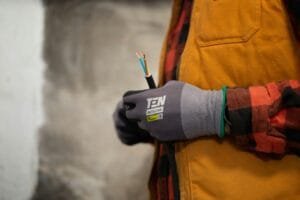The Ultimate Guide to Choosing the Perfect Home Insurance Policy
Are you searching for the perfect home insurance policy to protect your valuable investment? Look no further, as we present to you the ultimate guide that will help you make the right choice. Whether you’re a first-time homeowner or you’ve been in your house for years, selecting the right insurance policy is crucial to safeguard your property and possessions.
In this comprehensive guide, we will walk you through the key factors to consider when choosing a home insurance policy. We’ll help you understand the different types of coverage available, such as dwelling coverage, personal property coverage, and liability protection. Additionally, we’ll delve into the factors that can affect your premiums, such as your location, home’s age, and security systems.
By the end of this guide, you’ll have all the knowledge you need to make an informed decision that provides you with the right level of protection at a price that suits your budget. So, let’s get started on the ultimate exploration of home insurance policies and find the perfect one for you.
The importance of having home insurance
Owning a home is one of the biggest investments most people will make in their lifetime. It’s not just a place to live, but a valuable asset that needs to be protected. That’s where home insurance comes into play. Home insurance is a crucial safeguard that provides financial protection in the event of unexpected disasters, damages, or liabilities.
One of the primary reasons to have home insurance is to protect your property and belongings from unforeseen events. Natural disasters, such as fires, floods, or severe storms, can cause extensive damage to your home and personal possessions. Without insurance, the cost of repairing or replacing these items could be financially devastating. Home insurance helps to cover these expenses, ensuring that you can get your home back to its original condition and replace any lost or damaged items.
Moreover, home insurance provides liability coverage, which protects you in the event that someone is injured on your property or if you are found legally responsible for damages to another person’s property. This coverage can be especially important if you have a swimming pool, a trampoline, or other features that could pose a risk to visitors. Liability coverage can help to cover the legal and medical expenses associated with such incidents, preventing you from having to pay out of pocket.
Understanding different types of home insurance policies
When it comes to home insurance, there are several different types of policies to choose from, each with its own unique coverage and features. The most common types of home insurance policies include:
- Homeowner’s insurance: This is the most comprehensive type of home insurance, covering the structure of your home, your personal belongings, and liability protection. Homeowner’s insurance typically includes coverage for damage caused by fire, theft, vandalism, and natural disasters.
- Condo insurance: If you own a condominium, you’ll need a condo insurance policy. This type of policy covers the interior of your unit, including your personal belongings and any improvements you’ve made to the space. It also provides liability coverage for incidents that occur within your unit.
- Renter’s insurance: If you’re a tenant, renter’s insurance can provide coverage for your personal possessions and liability protection. While your landlord’s insurance may cover the structure of the building, it won’t protect your personal belongings or provide liability coverage.
- Dwelling fire insurance: This type of policy is designed to cover the structure of your home, but it doesn’t include coverage for your personal belongings or liability protection. Dwelling fire insurance is often a more affordable option for homeowners who don’t need the comprehensive coverage of a homeowner’s policy.
Factors to consider when choosing a home insurance policy
When selecting a home insurance policy, there are several factors to consider to ensure you get the right coverage at the right price. Here are some of the key factors to keep in mind:
- Coverage limits: Determine the appropriate coverage limits for your home and possessions. This includes the dwelling coverage (the amount it would cost to rebuild your home), personal property coverage (the value of your belongings), and liability coverage (the amount of protection for injuries or damages caused to others).
- Deductibles: The deductible is the amount you’ll have to pay out of pocket before your insurance coverage kicks in. Higher deductibles can lower your premiums, but you’ll need to be prepared to cover a larger portion of the costs in the event of a claim.
- Location: Your home’s location can have a significant impact on your insurance premiums. Homes in areas prone to natural disasters, such as hurricanes, earthquakes, or wildfires, may have higher insurance costs.
- Home’s age and condition: Older homes or homes in need of significant repairs may be more expensive to insure, as they may be more susceptible to damage or require more extensive repairs.
Assessing your coverage needs
When it comes to home insurance, it’s important to carefully assess your coverage needs to ensure that you have the right level of protection. Here are some key factors to consider:
- Dwelling coverage: This covers the cost of rebuilding or repairing your home in the event of a covered loss. It’s important to ensure that your dwelling coverage is sufficient to cover the full replacement cost of your home, which may be higher than the market value.
- Personal property coverage: This covers the cost of replacing your personal belongings, such as furniture, electronics, and clothing, in the event of a covered loss. Make sure to consider the value of your possessions and choose a coverage limit that will adequately protect them.
- Liability coverage: This protects you if someone is injured on your property or if you’re found legally responsible for damages to another person’s property. Consider your risk factors, such as the presence of a swimming pool or trampoline, when determining your liability coverage needs.
- Additional living expenses: This coverage can help pay for the cost of temporary housing and other expenses if your home becomes uninhabitable due to a covered loss, such as a fire or natural disaster.
Comparing home insurance providers
Once you’ve determined your coverage needs, the next step is to compare home insurance providers to find the best policy for your needs. Here are some tips to help you in the comparison process:
- Get multiple quotes: Don’t settle for the first quote you receive. Shop around and get quotes from several different insurance providers to ensure you’re getting the best possible rate.
- Consider the provider’s financial strength: Look for insurance companies with strong financial ratings, as this can indicate their ability to pay out claims in the event of a loss.
- Review the provider’s customer service and claims process: Research the insurance company’s reputation for customer service and the efficiency of their claims process. This can help you determine if they’ll be responsive and helpful if you need to file a claim.
- Compare coverage options: Ensure that the policies you’re considering provide the coverage you need, including any additional coverage options you may want, such as flood or earthquake insurance.
Understanding policy terms and conditions
When reviewing home insurance policies, it’s important to carefully read and understand the terms and conditions. This will help you avoid any surprises or gaps in coverage. Here are some key things to look for:
- Exclusions: Understand what types of events or damages are not covered by your policy. Common exclusions may include floods, earthquakes, or damage caused by neglect or poor maintenance.
- Deductibles: Familiarize yourself with the deductible amounts for different types of claims, as this will impact your out-of-pocket costs in the event of a loss.
- Replacement cost vs. actual cash value: Determine whether your policy provides replacement cost coverage, which pays to replace damaged or destroyed items with new ones, or actual cash value coverage, which takes depreciation into account.
- Endorsements and riders: Review any additional coverage options or endorsements that may be available, such as coverage for valuable items or identity theft protection.
Additional coverage options to consider
While standard home insurance policies provide a solid foundation of protection, there are often additional coverage options that you may want to consider to further safeguard your home and belongings. Some of these include:
- Flood insurance: Homeowner’s insurance policies typically do not cover flood damage, so if you live in an area prone to flooding, you may want to consider purchasing a separate flood insurance policy.
- Earthquake insurance: Similarly, earthquake damage is usually not covered by standard home insurance policies. If you live in an area with a high risk of earthquakes, this is an important additional coverage to consider.
- Umbrella liability insurance: This provides additional liability coverage beyond the limits of your homeowner’s or renter’s insurance policy, offering an extra layer of protection in the event of a lawsuit or major liability claim.
- Scheduled personal property coverage: This coverage can protect high-value items, such as jewelry, art, or collectibles, that may have limits or exclusions under a standard home insurance policy.
Tips for saving money on home insurance
While home insurance is a necessary expense, there are several ways you can save money on your premiums without sacrificing coverage. Here are some tips:
- Increase your deductible: Choosing a higher deductible can significantly lower your monthly or annual premiums.
- Bundle your policies: Many insurance providers offer discounts if you bundle your home insurance with other policies, such as auto or life insurance.
- Maintain good credit: Insurance companies often use credit scores as a factor in determining premiums, so maintaining a good credit score can help you save.
- Install security and safety features: Implementing measures like burglar alarms, fire extinguishers, and smoke detectors can often qualify you for discounts on your home insurance.
Common home insurance myths debunked
There are several common misconceptions about home insurance that can lead to gaps in coverage or unnecessary expenses. Let’s debunk some of the most common myths:
- “My homeowner’s association or landlord’s insurance covers my belongings”: This is not the case. Homeowner’s association or landlord’s insurance only covers the building itself, not your personal possessions.
- “My home is too old to be insured”: While older homes may have higher insurance costs, they can still be insured. The key is to ensure the policy provides adequate coverage for the home’s age and condition.
- “Flood damage is covered by my homeowner’s policy”: Flood damage is typically not covered by standard homeowner’s insurance. You’ll need to purchase a separate flood insurance policy to be protected.
- “I don’t need insurance because my home is paid off”: Even if your home is fully paid off, you still need insurance to protect your investment and your personal belongings in the event of a disaster or liability claim.
Making an informed decision for your home insurance policy
Choosing the right home insurance policy is a crucial step in protecting your most valuable asset. By understanding the different types of coverage, assessing your specific needs, and comparing providers, you can ensure that you have the right level of protection at a price that fits your budget.
Remember, home insurance is not a one-size-fits-all solution. Take the time to carefully evaluate your options, read the fine print, and ask questions to ensure you’re making an informed decision. With the right home insurance policy in place, you can have peace of mind knowing that your home and your family are protected.
So, don’t wait until it’s too late. Start exploring your home insurance options today and take the first step towards securing your financial future and the safety of your home.












